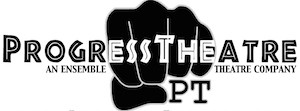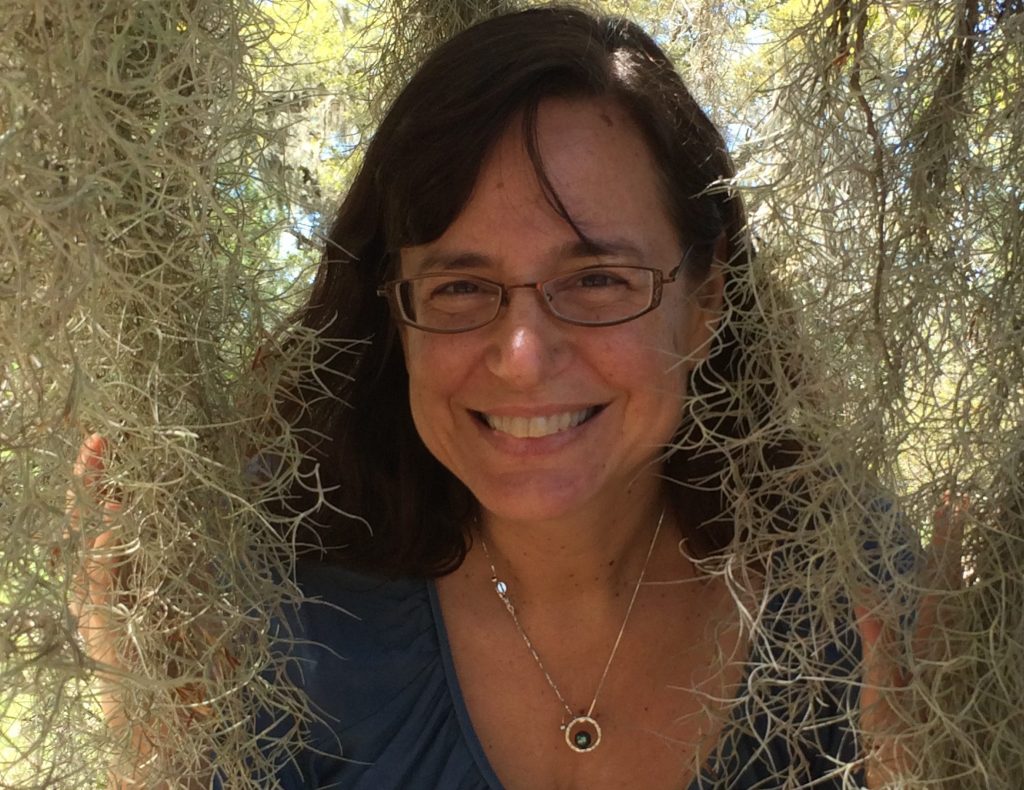Progress Theatre’s “Audience Blog” features responses to live PT performances written exclusively by show attendees we meet on tour.
How did you hear about PT? — Carol Khewhok contacted me and my colleague Hannah Schauer about making a link between University of Hawai’i and PT’s Shangri La Residency.
Was this your first PT show, workshop, engagement, etc? — My first experience was the event at Shangri La.
When was the last time you made progress? — Being a dancer, I am one of the lucky people who make progress every week, because every class is a chance to grow in technique and artistry.
From the Front Row
I engaged with Progress Theatre in three ways last month: I saw an excerpt of The Burnin’ as part of a special program in Honolulu at Shangri La, participated in a workshop at the University of Hawaiʻi at Mānoa with the company, and saw The Burnin’ with my family at Doris Duke Theatre – Honolulu Museum of Art. These performances and experiences touched my heart and my head.
The Program: Transformation in Paradise
First, to describe an effect created by the specific program at Shangri La (the former pleasure palace of Doris Duke). One of my faculty colleagues remarked to me later that our shared evening at Shangri La was one of the most perfect occasions of her life. By itself, the Duke home is an extraordinary setting overlooking the south coast of O’ahu, a delightful visual feast of colorful Islamic-inspired tiles, indoor fountains, and one-of-a-kind views. Although I did not glimpse them myself, my friend saw dolphins that evening, leaping in the water moments before the Progress Theatre presentation. Then she went on to consume the scrumptious outdoor buffet dinner. She was in bliss. As was I, even without the dolphins. The program was an hour-long performance featuring an excerpt from The Burnin’. Cristal said some opening words on discoveries she’d made in her residency about Doris Duke’s connection to spiritual traditions. The ensemble—Cristal, Rebekah, Tiana, and Derrick—then sang several songs, transfixing us with their exquisite harmonies and powerful blend. These spirituals were so compelling and beautiful that, even though they sang of sadness, we were left with a sense of optimism.
Then the company began their excerpt from The Burnin’ and I was in shock. We had become accustomed to a balanced group of four performers sharing in perfect equality. Then suddenly Rebekah was now the ridiculous May Belle in her satiny antebellum dress. And the other three actors were in coarse burlap cowering at the side of the stage. The Black/White divide was visible where it hadn’t been before. The equality was gone, and the shift in the power dynamic jerked me forcefully into the past. The effect was devastating for me. I went on to enjoy the performance from my front row seat—since the company makes such strong eye contact with individual spectators, I felt I had really gotten to know each of them by the end of that hour.
I then went off to the buffet dinner, where my husband and I conversed with a woman who had greatly enjoyed the performance. She repeatedly emphasized how much she loved Derrick’s expressions. But then she asked us what I had thought of the singing, and told us that she was uncomfortable with Rebekah being part of singing the spirituals. It just didn’t seem right to her. Fair enough, I thought. But the woman went on to say that Rebekah’s face was just too sharp and pointy to be singing those songs. Now I was uncomfortable. But I think her comment was not said in a mean spirit; it seemed to me to be an honest confrontation with the unexpected. I hesitated to tell any company member this anecdote while they were in residence but I share it now in the hopes that it gives some insight and perhaps lights a fire. Can the company reach out in specific ways to make bridges more often between communities that are not enough in contact?
The Workshop: Freedom to Cry
The afternoon workshop was sponsored by All the World’s a Stage, a local theatre company with strong ties to the Department of Theatre and Dance. Most participants were my undergraduate and graduate theatre students, but there were also some community members, and two others members of our faculty/staff. I enjoyed the group singing, but began to feel trepidation when Cristal said we would move into a SoulWork exercise on “emotional availability.”
When my father died 7 years ago, we quoted his wish: “Don’t sing me no sad songs, don’t shed no tears.” My mother passed away 20 months ago, and for the most part, I have honored her by not crying, but simply keeping on with relishing life, as I know she would want me to. But the tears are not far below the surface, and I knew if I continued with the workshop I would have to shed them, in the presence of my students and peers.
Cristal had the company shed them first, by committing themselves completely to her exercise: they stood in front of us and cycled through full commitment to the emotions of anger, sadness, fear, and joy. And then it was my turn. I decided to go through with it the exercise, and give it my all. And my tears rained down at the first mention of sadness. They were good to release, and joy was good to feel as well. I could not have done it if not for the support of the company and my fellow participants.
The Show: What Has Changed and What Hasn’t
At first, I was not going to attend the full production of The Burnin’ because I already had bought tickets to a local high school’s production of Sweet Charity for my entire family. But after experiencing the workshop, I knew that I needed to bring my 14-year old daughters to see The Burnin’: there will be many more chances in their lives to see Sweet Charity, but the call of unique and political theatre must be answered. When these girls, from a new and generous generation, create the theatre I know they inevitably will, I’m betting they will want it to burn more than they will want it to be sweet. Knowing about the company’s eye contact and presence, I sought out front row seats again. Although I didn’t experience the shocking shift I had at Shangri La, the script itself contains an immediate meta-theatrical shift, when you realize that May Belle and May Bee are playing parts, and that the true setting is the 1940s. And that not much has changed.
The performance filled out the excerpt I’d seen, and connected to my own research on early twentieth-century African American pageant dramas. These productions were largely done within school contexts, although some had a much larger community scope. Playwrights and educators, mostly women, used dance, allegorical and realistic scenes and characters, tableaux, songs and instrumental music to convey such topics as the achievements of Black soldiers, artists, and i
nventors, or the rise from slavery, or a portrait of a particularly notable African American such as Sojourner Truth or Phyllis Wheatley. It occurred to me that these pageants also had a bifurcated quality for its spectators. You were watching a story of Africans being forcibly taken by slave traders, but you were also aware that you were watching a story performed by, say, children at a middle school in Washington, D.C. in 1932. And the very enactment forced the connection and the same question: What has changed for the Black person in America? What has changed for the White person in America? What has for all of us? What hasn’t? …The many levels of The Burnin’ struck me as a modern-day pageant: full of education and hope.
Antebellum Addendum
I’m writing this essay from New Orleans, my hometown. I was almost ready to send it in this morning, but decided to wait until I had come back from a trip to DeLisle, Mississippi to see the gravesite of my mother and father. My mother is descended from the French Dedeaux clan, and graves going back into the eighteenth century surround those of her husband, brother, sister, and parents. Our relatives who were touring us around pointed out that we were in the “White section.” My husband and I then wandered far from the others, into the “Black section” of the cemetery. There, we found numerous Dedeaux graves and realized that they were the graves of the descendants of people the Dedeaux had enslaved. These enslaved people were held by members of my family; enslaved people, I found out about only this morning. Once again I was brought forcefully into the past. To quote The Burnin’: “If you ain’t free, that got something to do with me.”
Heartfelt thanks to Cristal and her company for sharing their stories, talents, and souls with me and with my family in such an open way.
Lurana Donnels O’Malley is a Professor in the Department of Theatre and Dance at the University of Hawaiʻi at Mānoa. She teaches European and American theatre, with research specializations in Russian and African-American theatre. Her 2006 book The Dramatic Works of Catherine the Great was the first monograph in any language on the plays and operas written by the eighteenth-century empress. Her article “Spirits in Black and White: Ethiopia as the Black Columbia in African American Pageantry” is available in the journal Text and Presentation. O’Malley also directs plays at Kennedy Theatre, and performs modern dance and hula. She is the daughter of New Orleans artist Johnny Donnels.

